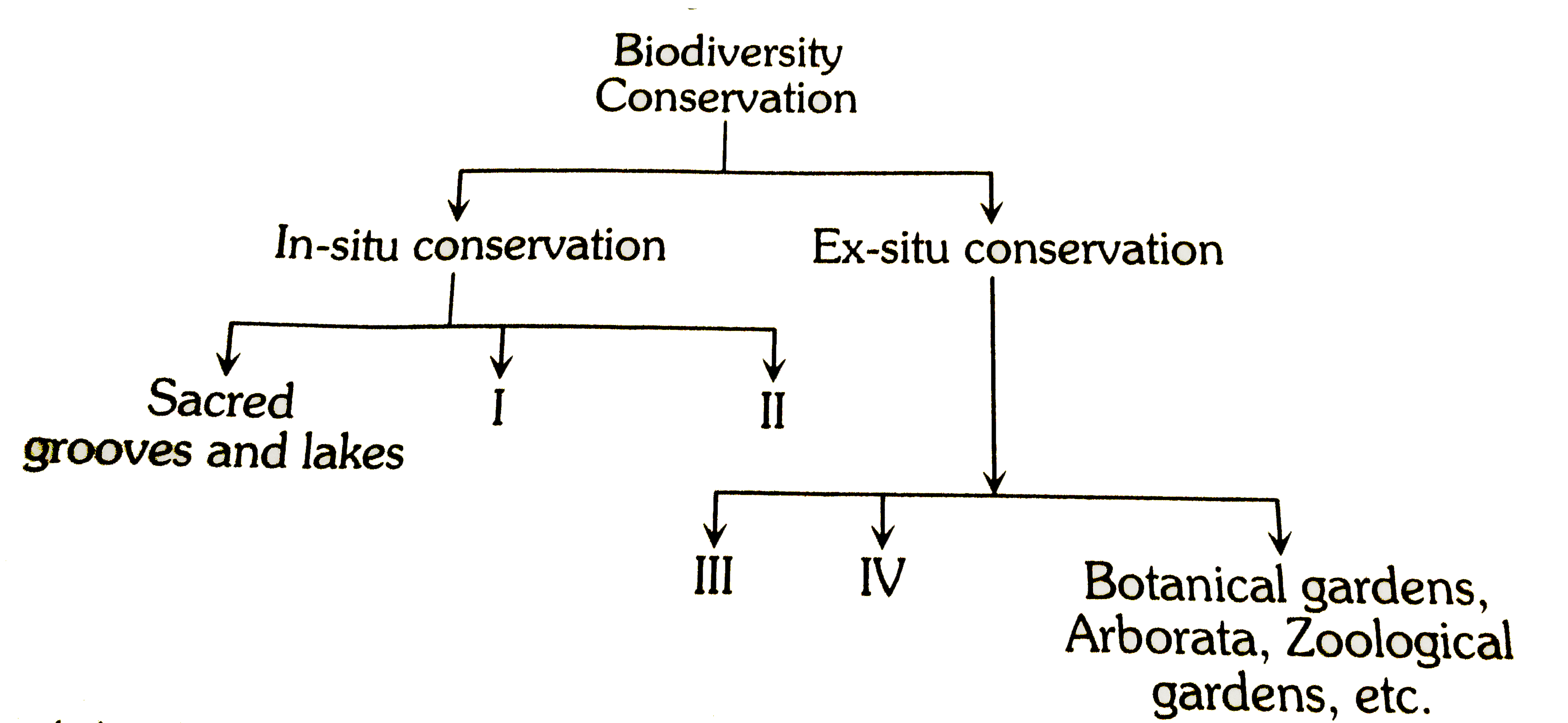Differentiate between in-situ and ex-situ approaches for conserving biodiversity. Give an example for each.
Text Solution
In-situ Conservation– Threatened /endangered plants and animals are provided with urgent measures to save from extinction within their natural habitat and they are protected and allowed to grow naturally.
Example- wildlife sanctuaries/ national parks /bioSQPhere reserves/ sacred groves
Ex-situ Conservation –Threatened animals and plants are taken out from their natural habitat and placed in a setting where they can be protected and given care Example- in botanical gardens/ zoological gardens/ seed/pollen/gene banks
|
Topper's Solved these Questions
- SAMPLE PAPER 2019BOOK - XII BOARD PREVIOUS YEAR PAPER ENGLISHCHAPTER - SAMPLE PAPER 2019EXERCISE - Section E Part A
3 Videos
- SAMPLE PAPER 2019BOOK - XII BOARD PREVIOUS YEAR PAPER ENGLISHCHAPTER - SAMPLE PAPER 2019EXERCISE - Section E Part B
3 Videos
- SAMPLE PAPER 2019BOOK - XII BOARD PREVIOUS YEAR PAPER ENGLISHCHAPTER - SAMPLE PAPER 2019EXERCISE - Section C
6 Videos
- EXAM REVISION SERIESBOOK - XII BOARD PREVIOUS YEAR PAPER ENGLISHCHAPTER - EXAM REVISION SERIESEXERCISE - All Questions
10 Videos
- XII BOARDSBOOK - XII BOARD PREVIOUS YEAR PAPER ENGLISHCHAPTER - XII BOARDSEXERCISE - Set-I
143 Videos
Similar Questions
Knowledge Check
The following is a incomplete flow chart depicting in - situ and ex-situ approaches of conserving biodiversity. Critically study and fill in the blanks I, II, III and IV
 AI - Biosphere reserves, II - National parks and wildlife sanctuaries, III - Sacred plants, Home gardens, IV - Seed banks, field gene banks, cryopreservation, etc.BI - Sacred plants, Home gardens, II - National parks and wildlife sanctuaries, III - Biosphere reserves, IV - Seed banks, field gene banks, cryopreservation, etC.CI - Biosphere reserves, II - Seed banks, field gene banks, cryopreservation, etc., III - Sacred plants, Home gardens, IV - National parks and wildlife sanctuaries.DI - Biosphere reserves, II - Sacred plants, Home gardens, III - National parks and wildlife sanctuaries, IV - Seed-banks, field gene banks, cryopreservation, etc.
AI - Biosphere reserves, II - National parks and wildlife sanctuaries, III - Sacred plants, Home gardens, IV - Seed banks, field gene banks, cryopreservation, etc.BI - Sacred plants, Home gardens, II - National parks and wildlife sanctuaries, III - Biosphere reserves, IV - Seed banks, field gene banks, cryopreservation, etC.CI - Biosphere reserves, II - Seed banks, field gene banks, cryopreservation, etc., III - Sacred plants, Home gardens, IV - National parks and wildlife sanctuaries.DI - Biosphere reserves, II - Sacred plants, Home gardens, III - National parks and wildlife sanctuaries, IV - Seed-banks, field gene banks, cryopreservation, etc.The following is a incomplete flow chart depicting in - situ and ex-situ approaches of conserving biodiversity. Critically study and fill in the blanks I, II, III and IV
 AI - Biosphere reserves, II - Sacred plants, Home gardens, III - National parks and wildlife sanctuaries, IV - Seed banks, field gene banks, cryopreservation etcBI - Biosphere reserves, II - Seed banks, field gene banks, cryopreservation, III - Sacred plants, Home gardens, IV - National parks and wildlife sanctuaries etcCI - Sacred plants, Home gardens, II - National parks and wildlife sanctuaries, III - Biosphere reserves, IV - Seed banks, field gene banks, cryoreservation etcDI - Biosphere reserves, II - National parks and wildlife sanctuaries, III - Sacred plants, Home gardens, IV - Seed banks, field gene banks, cryopreservation etc
AI - Biosphere reserves, II - Sacred plants, Home gardens, III - National parks and wildlife sanctuaries, IV - Seed banks, field gene banks, cryopreservation etcBI - Biosphere reserves, II - Seed banks, field gene banks, cryopreservation, III - Sacred plants, Home gardens, IV - National parks and wildlife sanctuaries etcCI - Sacred plants, Home gardens, II - National parks and wildlife sanctuaries, III - Biosphere reserves, IV - Seed banks, field gene banks, cryoreservation etcDI - Biosphere reserves, II - National parks and wildlife sanctuaries, III - Sacred plants, Home gardens, IV - Seed banks, field gene banks, cryopreservation etc
Differentiate between the in situ and ex situ approaches of conservation of biodiversity.
View SolutionDifferentiate between the in-situ and ex-situ strategies for conservation of biodiversity.
View SolutionList six advantages of "ex-situ" approach to conservation of biodiversity.
View SolutionName any two ex-situ conservation for biodiversity?
View SolutionIn india major ex- situ conservation of biodiversity is managed by which authority ?
View SolutionIn india major ex- situ conservation of biodiversity is msnshrf by which authority ?
View Solution
